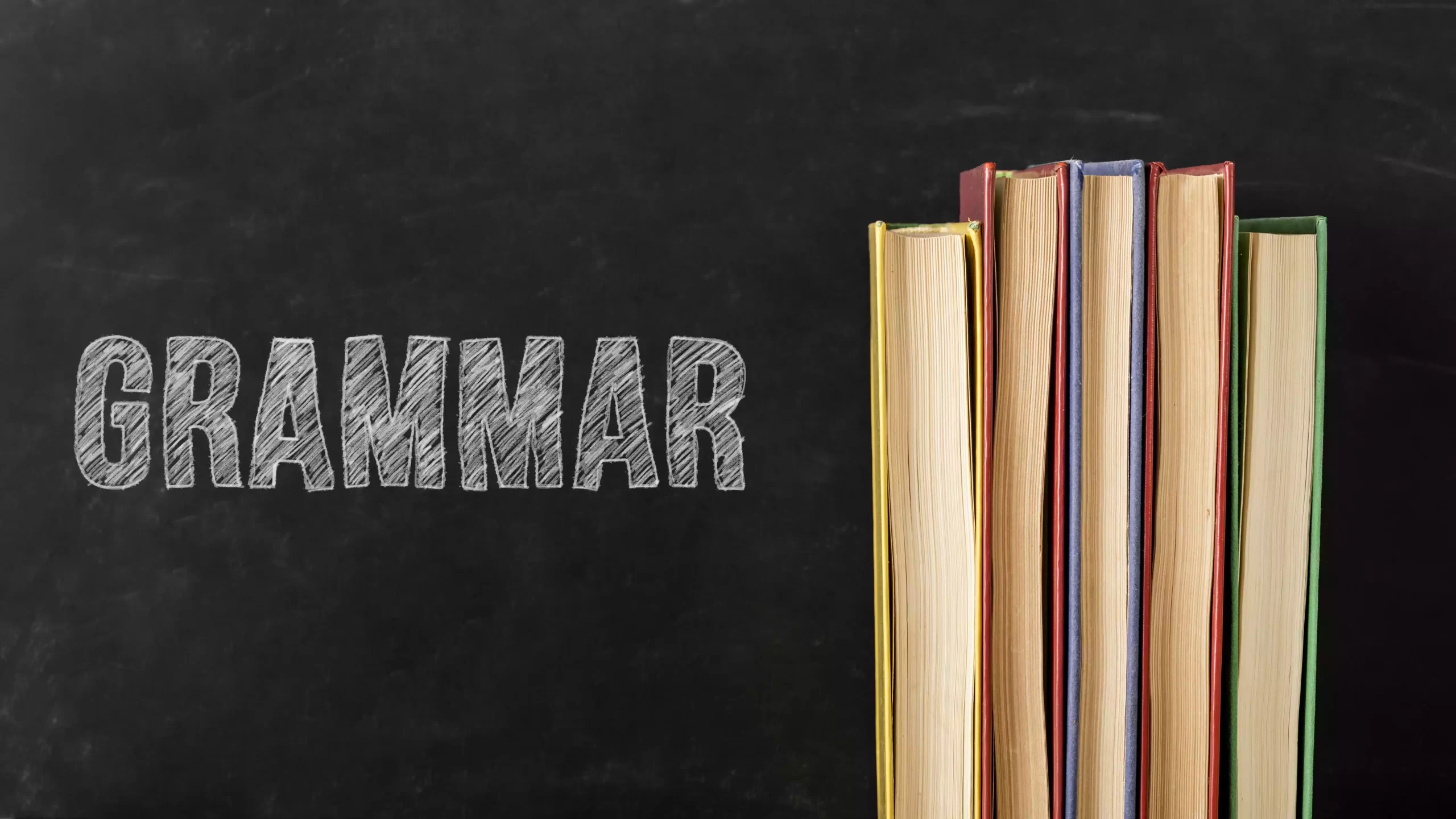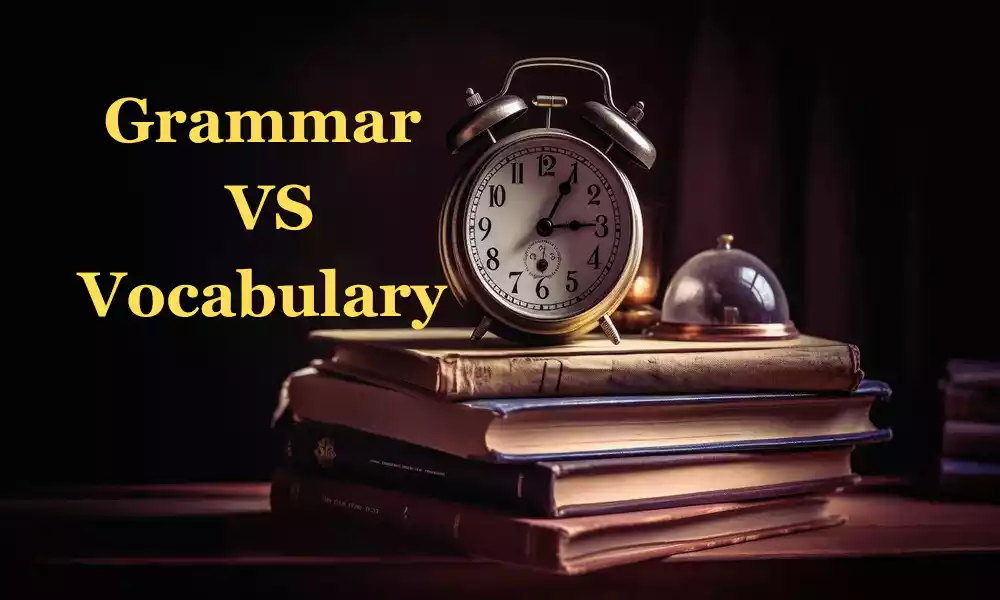Grammar and Vocabulary stand as the twin pillars upon which effective expression is built. The mastery of these elements not only enhances your ability to convey ideas but also plays a pivotal role in shaping how others perceive your intellect and competence. We’ll delve into the fascinating world of grammar and vocabulary, exploring their significance, tips for improvement, and their impact on various aspects of life.
What is Grammar?
Grammar is the set of rules and structures that govern the way a language is used, including how words are organized in sentences, how they change to convey tense and meaning, and how they relate to one another to create coherent communication. It encompasses various aspects such as syntax (sentence structure), morphology (word formation and inflection), punctuation, and the rules for constructing phrases and clauses.

Grammar provides the framework that allows a language to convey meaning, coherence, and clarity in written and spoken communication. It helps determine how words and phrases should be arranged to form grammatically correct sentences and facilitates effective communication by ensuring that language is used consistently and intelligibly.
What is Vocabulary?
Vocabulary refers to the set of words, phrases, and expressions that a person understands and can use in a particular language. It encompasses the entire lexicon or word bank of a language. Vocabulary includes both common words used in everyday communication and specialized terms relevant to specific fields or domains. Understanding vocabulary involves knowing the meanings, pronunciations, and usage of words, as well as recognizing their relationships and connotations.

Vocabulary is a vital component of language as it allows individuals to convey their thoughts, feelings, and ideas, and it plays a crucial role in effective communication by providing the necessary tools to express concepts, emotions, and experiences with precision and clarity. It can vary widely among individuals and can be expanded and enriched through reading, exposure to new contexts, and deliberate learning efforts.
Comparison Table of Grammar and Vocabulary
Here’s a comparison table highlighting the key differences between grammar and vocabulary:
| Aspect | Grammar | Vocabulary |
|---|---|---|
| Definition | Rules and structures of a language | Set of words and their meanings |
| Function | Establishes sentence structure, relationships | Enables expression and specificity |
| Components | Syntax, morphology, sentence types, etc. | Words, phrases, idioms, terms, etc. |
| Flexibility | Relatively fixed rules and structures | Constantly evolving and expanding |
| Acquisition | Typically learned through explicit instruction | Often acquired through exposure and context |
| Role in Communication | Shapes how sentences are formed | Adds nuance and detail to communication |
| Importance | Ensures coherence and clarity | Provides depth and specificity |
| Interplay | Works within the framework provided by grammar | Enhances and enriches language structure |
| Common Mistakes | Grammatical errors like subject-verb agreement | Vocabulary misuse or incorrect word choice |
| Improvement Strategies | Study rules and practice sentence construction | Expand vocabulary through reading and exposure |
| Example | Using proper verb tense in a sentence | Choosing the right synonym for “happy” |
Remember that grammar and vocabulary are interconnected; they both play vital roles in effective communication and language proficiency.
Interplay Between Grammar and Vocabulary
The interplay between grammar and vocabulary is a crucial aspect of language use and effective communication. These two components work together seamlessly to convey meaning, context, and nuance in spoken and written language.
Here’s how grammar and vocabulary interact:
- Syntax and Word Placement: Grammar dictates the rules for arranging words in a sentence. Vocabulary provides the words themselves. Together, they determine the structure and order of words to create coherent sentences.
- Example: In English, the subject-verb-object (SVO) word order is common. Grammar rules dictate this order, while vocabulary supplies the specific words used in the sentence.
- Word Agreement: Grammar rules include subject-verb agreement, where the verb form changes depending on the subject’s number and person. Vocabulary provides the nouns (subjects) and verbs, and grammar ensures they match correctly.
- Example: “She plays the piano.” (Correct subject-verb agreement.)
- Tenses and Verb Forms: Grammar governs verb conjugations and tenses. Vocabulary supplies the verbs themselves.
- Example: “I will eat dinner.” (Grammar dictates the future tense, while vocabulary provides the verb “eat.”)
- Modifiers and Adjectives: Vocabulary includes adjectives that provide detail and description. Grammar rules determine their placement within sentences.
- Example: “The beautiful flowers bloomed.” (Vocabulary includes “beautiful,” and grammar places it before the noun “flowers.”)
- Idioms and Expressions: Vocabulary includes idiomatic phrases and expressions that add color and depth to language. Grammar ensures they fit within sentences.
- Example: “It’s raining cats and dogs.” (Grammar accommodates the idiom, and vocabulary supplies the idiomatic phrase.)
- Context and Nuance: Vocabulary choices can convey specific meanings and nuances. Grammar helps structure sentences to ensure these nuances are clear.
- Example: “She whispered softly.” (Vocabulary choice of “softly” provides the nuance of a gentle whisper.)
- Effective Communication: A rich vocabulary allows for precise communication, while proper grammar ensures that communication is clear and easily understood.
- Example: “His extensive vocabulary and impeccable grammar make him an effective communicator.”
Grammar and vocabulary are not isolated components of language, they are intertwined and dependent on each other. Vocabulary provides the building blocks of language, while grammar gives those blocks structure and order. Effective language use requires a balance between both elements to convey ideas accurately and fluently.
Challenges and Common Mistakes
Challenges and common mistakes in language learning and usage often involve both grammar and vocabulary. Understanding these challenges can help learners and users of a language improve their communication skills.
Here are some challenges and common mistakes associated with both grammar and vocabulary:
Grammar Challenges and Common Mistakes:
- Subject-Verb Agreement: One common mistake is failing to match the subject and verb correctly in terms of number and person.
- Mistake: “The team are playing well.” (Incorrect subject-verb agreement; it should be “The team is playing well.”)
- Tense Consistency: Maintaining consistency in verb tense throughout a sentence or paragraph can be challenging.
- Mistake: “I was reading a book, and then I will watch a movie.” (Inconsistent use of past and future tenses.)
- Word Order: Incorrect word order can lead to confusion or awkward sentences.
- Mistake: “Yesterday I met my friend in the park.” (Correct order: “Yesterday, I met my friend in the park.”)
- Misplaced Modifiers: Misplacing words or phrases that modify other elements in a sentence can change the intended meaning.
- Mistake: “I found a scarf in the closet that my grandmother knitted.” (Misleading; it suggests the closet knitted the scarf.)
- Run-on Sentences and Fragments: Not properly structuring sentences can result in run-on sentences or sentence fragments.
- Mistake: “She loves to read books, especially mysteries. Because they are thrilling.” (Fragment; it should be combined or punctuated differently.)
Vocabulary Challenges and Common Mistakes:
- Misusing Homophones: Words that sound the same but have different meanings can lead to confusion.
- Mistake: “Their going to the party too.” (Incorrect use of “their,” “there,” and “they’re.”)
- Incorrect Word Choice: Choosing the wrong word with a similar meaning can change the meaning of a sentence.
- Mistake: “The effect of pollution is very bad on the environment.” (Should be “The impact of pollution is detrimental to the environment.”)
- Overusing Words: Repeating the same word excessively can make writing or speech monotonous.
- Mistake: “She was very, very happy about her promotion.” (Repetitive use of “very.”)
- Inappropriate Collocations: Using words together that don’t typically go together in a specific context can sound unnatural.
- Mistake: “Make a photograph” instead of “Take a photograph.”
- False Cognates: Words that look similar in two languages but have different meanings can lead to misunderstandings.
- Mistake: “Sensible” in English vs. “sensibel” in German (sensitive).
Addressing these challenges and avoiding common mistakes involves consistent practice, expanding vocabulary, and gaining familiarity with grammar rules. Language learners and users can benefit from reading widely, seeking feedback, and actively working on improving their language skills.
Summary
Grammar and Vocabulary are the twin pillars of effective language communication. Grammar provides the structure and rules necessary for constructing coherent sentences, while vocabulary supplies the words and phrases that convey meaning and depth. Both elements are interdependent, and mastering their interplay is essential for clear and precise expression.
A robust vocabulary allows for nuance and specificity, while proper grammar ensures that these linguistic building blocks are assembled correctly. In the world of language, striking the right balance between grammar and vocabulary is the key to unlocking the full potential of communication.



